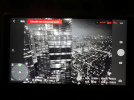Hi guys, I was flying my Mini 3 pro at night in a highly urban Area (Jakarta). It had already lost signal to the controller and then started to return to home automatically. It regained signal for a second and the last thing I saw was a tall building in front of it (about 80m away). It then lost signal again and never returned home. RTH altitude was set to 150m, but it appears the building was approx 230m in height. I had obstacle bypass enabled and was flying in Normal Mode.
What is likely to have happened? I searched the area below (some bushland) in case it had stayed in that position and landed, but no luck. I then thought that perhaps after it lost signal it kept trying to return home, but maybe crashed into the building due to lack of obstacle avoidance at night (being too dark). The building is under construction so I asked a few construction workers if they would mind looking on the ground and also around the top floors where it may have flown into. Nothing found yet. Unfortunately, I was not able to locate it with the controller using the flashing lights and beeps (so the battery was dead).
What is the most likely scenario in this case? Would it have crashed into the building due to insufficient light for obstacle avoidance, or would it have stayed where it was on the last known location and then eventually landed when the battery was dead?
Here is the flight log: DJI Flight Log Viewer - PhantomHelp.com
Last view of screen on the controller:

What is likely to have happened? I searched the area below (some bushland) in case it had stayed in that position and landed, but no luck. I then thought that perhaps after it lost signal it kept trying to return home, but maybe crashed into the building due to lack of obstacle avoidance at night (being too dark). The building is under construction so I asked a few construction workers if they would mind looking on the ground and also around the top floors where it may have flown into. Nothing found yet. Unfortunately, I was not able to locate it with the controller using the flashing lights and beeps (so the battery was dead).
What is the most likely scenario in this case? Would it have crashed into the building due to insufficient light for obstacle avoidance, or would it have stayed where it was on the last known location and then eventually landed when the battery was dead?
Here is the flight log: DJI Flight Log Viewer - PhantomHelp.com
Last view of screen on the controller:

Last edited:










